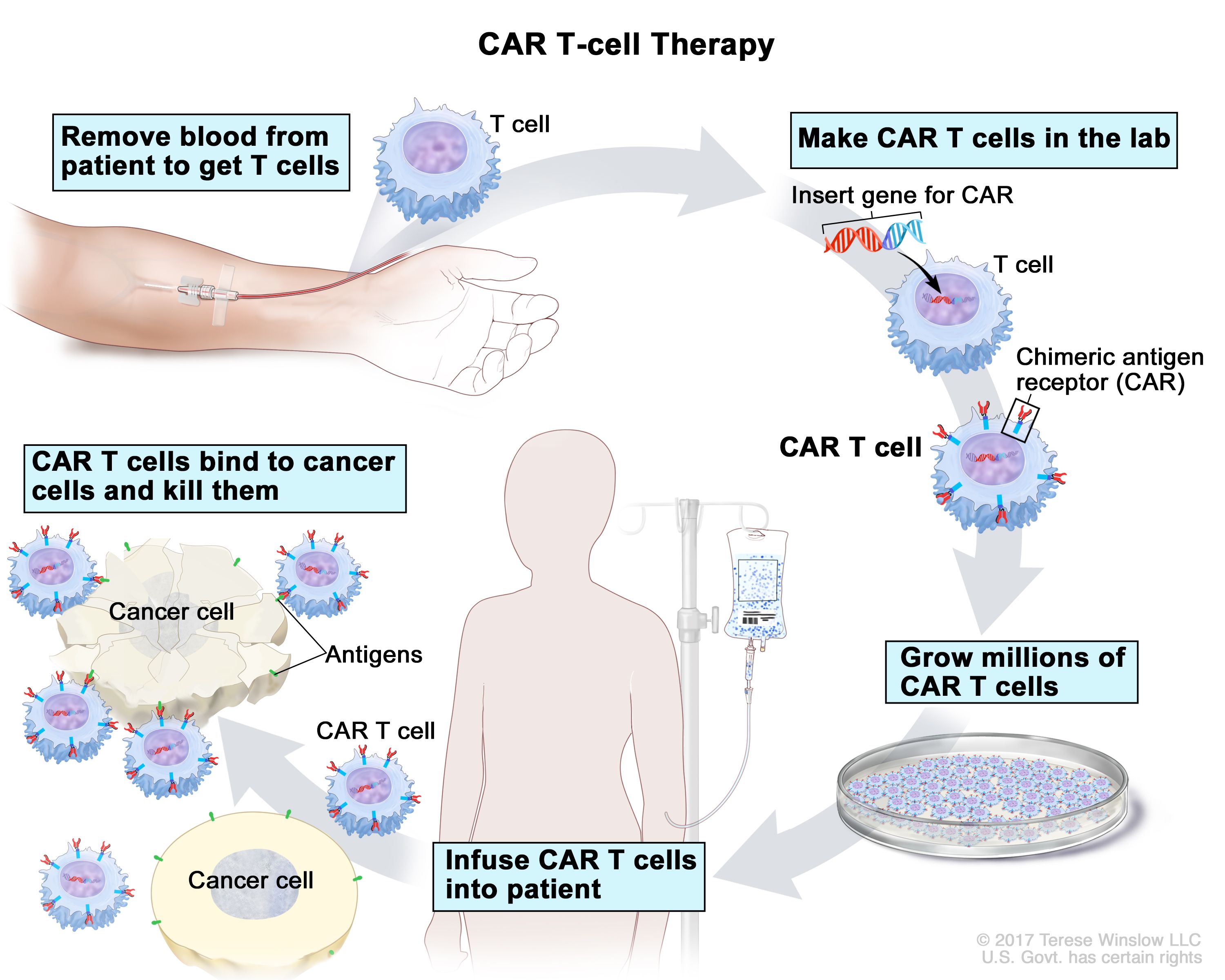CAR-T Therapy
Chimeric Antigen Receptor T-cell (CAR-T) therapy is an innovative immunotherapy that involves modifying a patient’s T cells (typically via transduction with a virus) to express receptors specific to antigens present on cancer cells, thereby enabling the immune system to target and destroy the malignant cells. This approach has shown significant efficacy in treating certain hematologic malignancies, such as leukemia and lymphoma.
ddPCR being a highly sensitive technique, plays a crucial role in several, CAR-T related areas:
Assessing CAR Transgene Copy Number: During CAR-T cell production, T cells are genetically engineered to express CARs. Accurately determining the number of CAR transgene copies integrated into the T cells is essential for ensuring therapeutic efficacy and safety. ddPCR provides precise measurements of transgene copy numbers, aiding in the selection of optimal cell populations for patient infusion. See this newsletter by Mark White & Marwan Alsarraj for more info.
Monitoring CAR-T Cell Kinetics and Biodistribution: After infusion, tracking the persistence and distribution of CAR-T cells within the patient’s body is vital for evaluating treatment response and potential adverse effects. ddPCR enables the detection and quantification of CAR-T cells in blood and tissue samples, offering insights into their in vivo behavior. Check out this paper by Sugimoto et al., 2021 for more details.
Detecting Replication-Competent Viruses: The use of viral vectors in CAR-T cell manufacturing raises concerns about the potential generation of replication-competent viruses, which could pose risks to patients. ddPCR assays can be applied to sensitively detect these viruses, ensuring the safety of the therapeutic product. To learn more, refer to the newsletter linked above.
In summary, ddPCR is an indispensable tool in CAR-T therapy, enhancing the precision of cell manufacturing, ensuring product safety, and providing critical data on therapeutic performance.

Illustration demonstrating how the CAR-T therapy works. Original, in-context image is found here